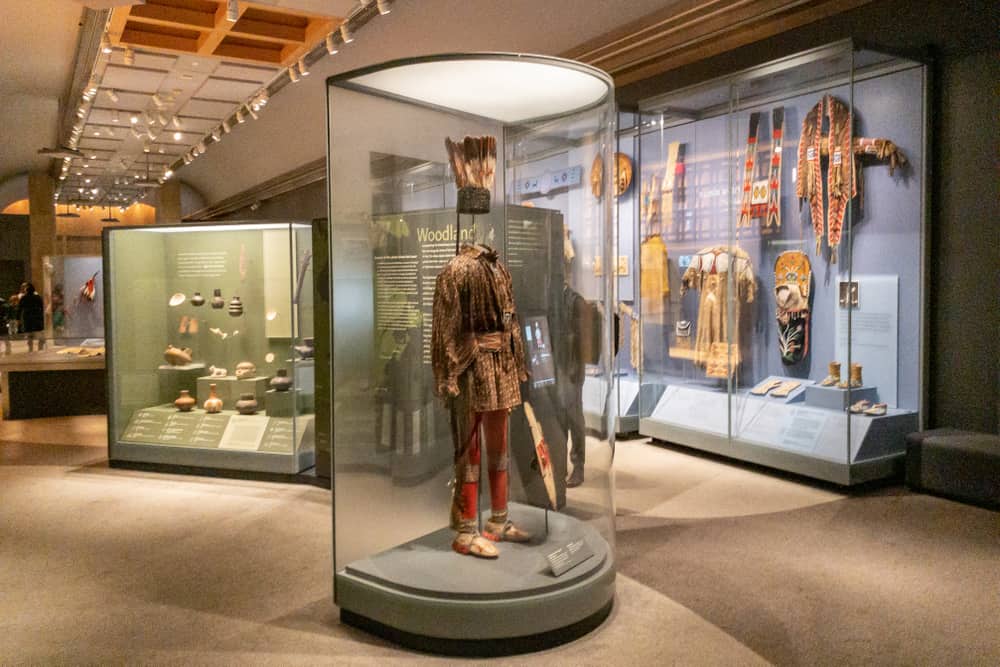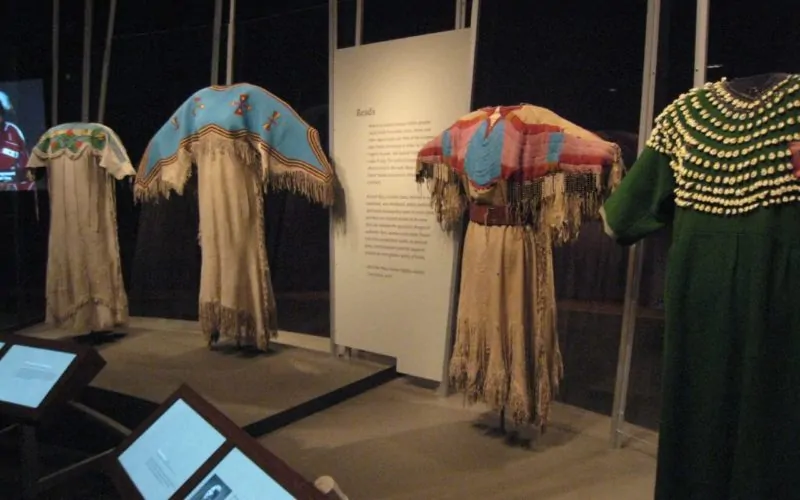
Navigating Indigenous Narratives: Premier Museums for In-Depth Tribal Study
The study of Native American cultures and histories presents a unique set of challenges and opportunities for learners. While numerous institutions house artifacts and present broad overviews, truly understanding specific tribes in depth requires engagement with institutions that prioritize Indigenous voices, employ rigorous scholarship, and foster a nuanced appreciation for the diversity, resilience, and contemporary vitality of Native peoples. This article delves into the characteristics of premier museums that excel in providing profound insights into specific Native American tribes, moving beyond generalized narratives to offer rich, detailed, and often tribally-governed perspectives.
Defining "Best" for Specific Tribal Learning
To identify the "best" museums for in-depth tribal study, several critical criteria must be considered:
- Tribal Collaboration and Governance: The most authoritative and authentic interpretations of tribal history and culture come directly from the tribes themselves. Museums that are tribally owned, operated, or that engage in deep, sustained consultation and collaboration with specific tribal nations are paramount. This ensures cultural accuracy, respect for traditional knowledge, and the presentation of narratives that resonate with the community.
- Depth of Collection and Context: Beyond mere display, a museum must possess extensive collections—artifacts, oral histories, documents, contemporary art—that are meticulously cataloged and contextualized within the specific cultural, historical, and geographical framework of a tribe. This includes understanding the provenance of objects and the ethical considerations surrounding their acquisition and display.
- Scholarly Rigor and Research: Strong museums support and engage in ongoing academic research, often in partnership with tribal scholars and elders. This commitment to scholarship ensures that exhibitions and educational programs are informed by the latest understandings and contribute to the broader academic discourse.
- Contemporary Relevance: Native American cultures are living, evolving entities. The best museums connect historical narratives to contemporary issues, highlighting tribal sovereignty, cultural revitalization efforts, language preservation, and the ongoing contributions of Native peoples to society.
- Immersive and Experiential Learning: Effective institutions utilize diverse pedagogical approaches, including immersive exhibits, interactive displays, traditional arts demonstrations, language programs, and opportunities for direct engagement with tribal members.
- Repatriation and Ethical Practices: A museum’s commitment to the Native American Graves Protection and Repatriation Act (NAGPRA) and broader ethical repatriation practices signifies its respect for Indigenous sovereignty and cultural patrimony, fostering trust and enabling deeper collaboration.

Leading Institutions for In-Depth Tribal Study
While a definitive single "best" museum is subjective and depends on the specific tribal focus desired, several institutions consistently stand out for their commitment to presenting specific tribal narratives with depth and authenticity.

1. National Museum of the American Indian (NMAI), Smithsonian Institution (Washington D.C. & New York City)
The NMAI holds a unique position as a national museum explicitly dedicated to Native American cultures. Its fundamental operating principle, established through extensive tribal consultation, is to present Native perspectives by Native voices. While its scope is broad, NMAI excels in specific tribal learning through:
- Exhibitions Curated by Tribes: Many NMAI exhibitions are developed in close collaboration with, or directly by, specific tribal communities. This ensures that the narratives, interpretations, and selection of objects reflect the internal understanding and priorities of the featured tribe. Examples include exhibits on the Apsáalooke (Crow) people, the Haudenosaunee (Iroquois) Confederacy, or specific regional groups.
- Extensive Collections: With over 825,000 objects, photographs, and archival documents representing more than 1,200 Indigenous cultures throughout the Western Hemisphere, NMAI’s collections allow for deep dives into specific tribal material culture and history. Its "Collections Search" portal offers researchers and the public unprecedented access.
- Cultural Interpreters and Programs: NMAI regularly hosts tribal elders, artists, and cultural practitioners who share their knowledge and traditions directly with visitors, offering firsthand accounts and insights into their specific tribal heritage.
- Repatriation Leadership: NMAI has been a leader in the repatriation of ancestral remains and sacred objects, setting a high standard for ethical museum practice and fostering strong relationships with tribal nations.
2. The Heard Museum (Phoenix, Arizona)
The Heard Museum is globally recognized for its significant collection of Native American art and culture, particularly from the Southwest. Its strength lies in its deep focus on the Indigenous peoples of Arizona and the broader American Southwest, offering profound insights into specific regional tribes:
- Southwest Focus: The Heard provides unparalleled depth on tribes such as the Hopi, Navajo (Diné), Zuni, Apache, Pima (Akimel O’odham), Maricopa (Piipaash), and others. Dedicated galleries often explore the distinct art forms, ceremonial practices, and social structures of these individual groups.
- Annual Indian Fair & Market: This renowned event brings together hundreds of Native artists from various tribes, allowing visitors to engage directly with creators and learn about specific tribal artistic traditions and innovations.
- Living Traditions: The museum’s courtyard often features demonstrations of traditional arts and crafts by Native artists, providing direct exposure to cultural practices specific to various Southwestern tribes.
- Hopi and Navajo Exhibitions: The Heard consistently features long-term and rotating exhibitions that delve deeply into the cosmology, history, and artistic expressions of the Hopi and Navajo nations, often showcasing specific family traditions and historical narratives.
3. Mashantucket Pequot Museum & Research Center (Mashantucket, Connecticut)
This institution stands as a paradigm of tribally-owned and operated museums, offering an exceptionally detailed and immersive experience of a specific tribal history and culture: the Mashantucket Pequot Tribe.
- Tribal Ownership and Perspective: Entirely owned and operated by the Mashantucket Pequot Tribal Nation, the museum presents its history, culture, and lifeways from an Indigenous perspective. This direct control ensures accuracy and cultural sensitivity.
- Immersive Dioramas and Exhibits: The museum’s signature feature is its life-size dioramas, which transport visitors into pre-contact Pequot villages, colonial-era interactions, and the complexities of the Pequot War. These meticulously researched and crafted scenes provide an unparalleled sense of specific tribal life.
- Comprehensive Historical Narrative: From deep history to contemporary tribal sovereignty, the museum meticulously chronicles the Pequot experience, including language revitalization efforts, economic development, and cultural continuity.
- Research Center: Beyond public exhibits, the attached research center houses extensive archives, oral histories, and scholarly resources dedicated to the Pequot and other regional Algonquian-speaking peoples, making it a vital resource for specialized study.
4. Eiteljorg Museum of American Indians and Western Art (Indianapolis, Indiana)
The Eiteljorg Museum distinguishes itself with a strong focus on the Indigenous peoples of the Great Lakes and Plains regions, alongside its Western art collection.
- Great Lakes/Plains Focus: The museum actively collects and exhibits art and cultural objects from tribes such as the Miami, Potawatomi, Delaware (Lenape), Ojibwe (Chippewa), Lakota, and others, providing specific regional context often overlooked by broader national museums.
- Contemporary Native Art: The Eiteljorg has a robust collection of contemporary Native art, showcasing how artists from specific tribes continue to express their cultural identities and address modern issues through diverse mediums. This is crucial for understanding the living nature of tribal cultures.
- Annual Indian Market and Festival: Similar to the Heard, the Eiteljorg hosts an annual market that connects visitors with artists from numerous tribes, fostering direct learning about specific tribal artistic traditions and their evolution.
5. Gilcrease Museum and Philbrook Museum of Art (Tulsa, Oklahoma)
Oklahoma’s unique history as "Indian Territory" makes its museums particularly vital for understanding the complex histories of the Five Civilized Tribes (Cherokee, Choctaw, Chickasaw, Creek, and Seminole) and dozens of other removed and relocated tribes.
- Gilcrease Museum: Boasting one of the world’s most comprehensive collections of art and artifacts from the American West, Gilcrease has extensive holdings related to Native American history. Its archives are particularly strong for documenting the removal era, treaty negotiations, and the early reservation period for specific tribes.
- Philbrook Museum of Art: Philbrook’s Native American art collection is internationally renowned, featuring a deep array of baskets, pottery, textiles, and jewelry from a multitude of tribes across North America. Its strength lies in presenting the aesthetic and cultural diversity of specific tribal art forms with scholarly depth. Both museums are actively working to decolonize their collections and narratives, ensuring greater tribal involvement.
6. Smaller, Tribal-Specific Cultural Centers
For the most granular, in-depth learning about a single tribe, smaller, localized museums and cultural centers are often unparalleled. These are frequently established and managed directly by tribal nations, serving as community hubs for cultural preservation and education. Examples include:
- Seneca Art & Culture Center at Ganondagan State Historic Site (Victor, New York): Focuses specifically on the Seneca Nation, one of the Six Nations of the Haudenosaunee Confederacy, on their ancestral lands. It offers a truly immersive experience of Seneca history, language, and contemporary life.
- Oneida Nation Museum (Oneida, Wisconsin): Dedicated to the history and culture of the Oneida Nation of Wisconsin, providing specific insights into their journey from New York to Wisconsin, their language, and their contemporary governance.
- Museum of the Cherokee Indian (Cherokee, North Carolina): Offers an in-depth exploration of the Eastern Band of Cherokee Indians, their history, culture, and ongoing connection to their ancestral homelands.
Conclusion
The journey to understand specific Native American tribes in depth is a rewarding one, requiring a commitment to seeking out institutions that prioritize Indigenous voices, engage in rigorous scholarship, and present living cultures with respect and nuance. While national institutions like NMAI offer broad foundational knowledge and tribally-informed perspectives, regional powerhouses like the Heard and Eiteljorg museums excel in their specific geographic concentrations. For the most profound, singular tribal immersion, tribally-owned and operated cultural centers like the Mashantucket Pequot Museum are indispensable. By prioritizing these criteria, learners can navigate the rich and diverse landscape of Native American history and culture, moving beyond stereotypes to engage with the vibrant, complex, and enduring narratives of specific Indigenous nations.


